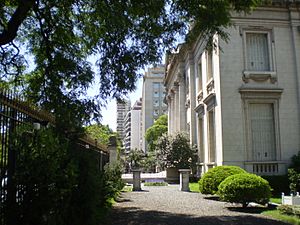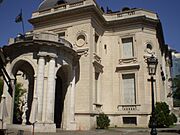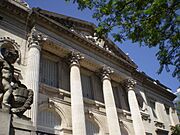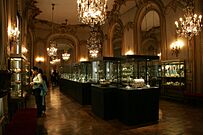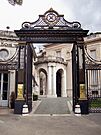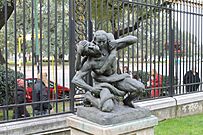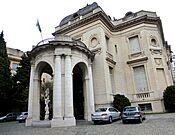National Museum of Decorative Arts, Buenos Aires facts for kids
| Museo Nacional de Arte Decorativo | |
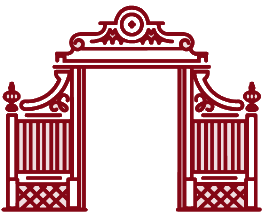 |
|
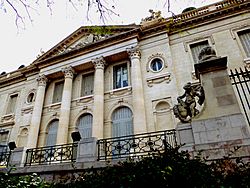
Palacio Errázuriz, seat of the museum
|
|
| Established | 1937 |
|---|---|
| Location | Buenos Aires, Argentina |
| Type | Art museum |
| Accreditation | Municipal museum |
| Key holdings | Palacio Errázuriz (1911) |
| Collections | Luix XV Art deco |
| Owner | Government of the City of Buenos Aires |
The National Museum of Decorative Arts is an art museum located in the Recoleta neighborhood of Buenos Aires, Argentina. It's a place where you can explore beautiful art and objects from the past, housed in a grand old mansion.
Contents
History of the Museum
How the Museum Started
The story of this museum began with a wedding in 1897. Matías Errazúriz and Josefina de Alvear, two important people in Argentine society, got married. Matías was a diplomat, meaning he worked for his country in other nations. He was even an ambassador to France for many years.
In 1911, the couple asked a French architect named René Sergent to design a huge house for them. They wanted it to be their home when Matías retired from his diplomatic work. This fancy, old-style building, finished in 1916, was so impressive that another family built a similar palace nearby!
Decorating the Mansion
After the mansion was built, Matías and Josefina spent two years filling it with amazing antiques and art pieces. They collected many beautiful things from different parts of the world.
Sadly, Josefina passed away in 1935. Matías, following advice from his children, decided to give their wonderful mansion and all its treasures to the Argentine government. That's how the National Museum of Decorative Arts was officially opened in 1937.
The Mansion: A Closer Look
Building the Palace
The Argentine government bought the mansion and its art collection on December 18, 1937. The building was designed by French architect René Sergent in 1911. It took until 1917 to finish because of problems caused by the First World War.
Sergent worked with a team of skilled decorators who specialized in making interiors and gardens look amazing. They brought materials like wooden panels, mirrors, and marble all the way from Europe. Many European artists also came to help with the detailed decorations.
Outside the Mansion
The outside of the building looks grand and serious, inspired by French architecture from the 1700s. It has huge Corinthian columns that cover two main floors. The ground floor has round arches leading to the garden, and the first floor held the family's private rooms. The very top floor, or attic, had rooms for the servants, with windows hidden by a decorative railing.
Inside the Mansion
The museum has many incredible rooms, each with its own unique style:
- The Entrance Hall: This grand hall is covered in stone that looks like it came from Paris. A fancy staircase leads to the main floor. It has a beautiful Louis XV style with columns and arched ceilings. Look up, and you'll see art that represents Music, Architecture, Sculpture, and Painting.
- Antechamber: This room connects to several other rooms and the stairs. It's decorated in a classic style with polished oak wood panels and plaster frames on the ceiling.
- The Great Hall: This is the biggest room in the mansion, with a very high ceiling. It has a floor made of different types of wood in a star pattern. The high windows, detailed ceiling, and large fireplace make it feel like a grand English hall from the 1500s.
- The Dining Room: This luxurious room was designed for big dinners and parties. It was inspired by the famous Palace of Versailles in France. It uses beautiful marble from Italy and France to create a fancy, old-world feel.
- The Winter Garden: This lovely room connects the dining room and the ballroom. It has a calm, elegant style with colors that match the nearby rooms.
- The Ballroom: This room feels like a dance from the past, with soft curves everywhere. The pale colors, shiny surfaces, and many mirrors make the room feel much larger and brighter.
- The Room of Madame: This was Mrs. Josefina de Alvear's special room for receiving guests. It has comfortable chairs and tables in a style that was popular in the 1800s. The painted wood panels and decorations remind visitors of the influence of Queen Marie Antoinette.
- The Study of Mr. Matías de Errázuriz: This room was designed by a French decorator named André Carlhian. It features carved oak panels and red velvet. Mr. Matías used this quiet, classic room for thinking, surrounded by 19th-century paintings and beautiful objects from China and Japan.
- Private Family Rooms: The first floor was where the family lived. Each family member had their own apartment with a living room, bedroom, dressing room, and bathroom.
- The Gallery of Tapestries: This gallery surrounds the Great Hall. Here, you can see beautiful French and Flemish tapestries from the 1500s, 1600s, and 1700s, along with furniture and paintings from those times.
- The "Sert" Room: This room was Matías Errázuriz Alvear's private space. It's named after the Spanish painter Josep Maria Sert, who designed it in the Art Deco style. The walls, doors, and four paintings are all part of his unique design.
- Room Zubov: This room used to be a family room. Today, it holds a collection of tiny, detailed portraits called miniatures. These amazing European miniatures from the 1500s to the 1800s are truly special.
Museum Collections
The museum has twelve exhibit halls and nine permanent collections with over 4,000 objects. Here are some of the highlights:
- Paintings: You can see famous works like Jesus Bearing the Cross Uphill by El Greco, The Sacrifice of the Rose by Jean-Honoré Fragonard, and Portrait of Abbé Hurel by Édouard Manet.
- Sculptures: The collection includes an ancient Roman statue of Minerva, a marble wall carving called Adoration of the Magii by Cristoforo Mantegazza, and The Eternal Spring by Auguste Rodin.
- East Asian Art: There are many beautiful Chinese vases and jade sculptures from the Qianlong era.
- Other Treasures: The museum also has tapestries, porcelains, 18th-century furniture, and one of the most important public collections of miniature art in the Americas. Most of these antiques are from before the year 1800.
The museum also hosts special temporary exhibits, concerts, classes, and workshops. You can even enjoy a snack at Café Croque Madame, which has tables in the beautiful gardens when the weather is nice. Since 1944, the Argentine Academy of Letters has also been located in this historic building.
Images for kids
-
Jesus Bearing the Cross Uphill, El Greco
-
Portrait of Abbé Hurel, Édouard Manet
-
View of Castel Sant'Angelo, Jean Baptiste Camille Corot
-
Still life, Rachel Ruysch
-
Josefina de Alvear de Errázuriz, Joaquín Sorolla
Gallery
See also
 In Spanish: Museo Nacional de Arte Decorativo para niños
In Spanish: Museo Nacional de Arte Decorativo para niños


